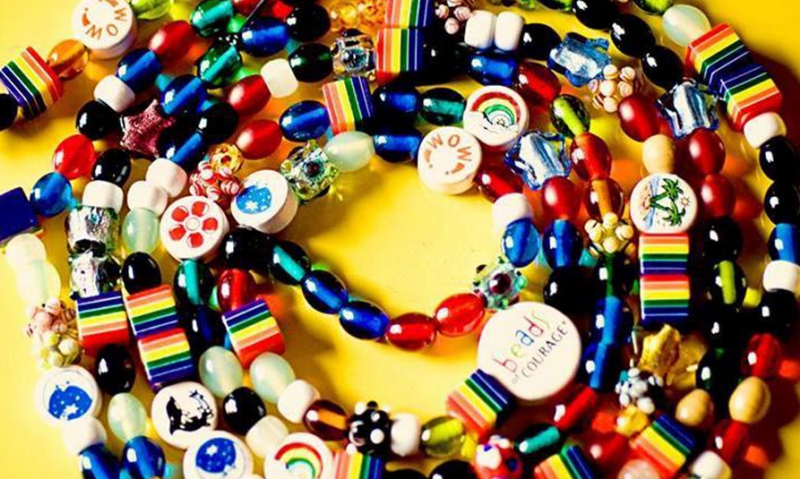
Beads of Courage tells a child's medical journey
While working as a pediatric oncology nurse at Phoenix Children's Hospital, Dr. Jean Baruch "grew tiresome of handing out stickers" to children with cancer and other serious illnesses as a way to acknowledge their courage. "Any pediatric nurse will tell you that you have a compelling need to give something to the patients that you care for," said Baruch, who spoke to attendees at The American Legion's National Children & Youth Conference on Sept. 20. "For me, stickers weren't enough because stickers are disposable. I knew that children were seeking something tangible, something to tell others of their experience beyond the physical."
From her experience as a nurse, Baruch knew that children enjoyed working with beads. This observation led her to The Bead Museum in Glendale, Ariz., where she discovered that "beads are the earliest art form known to humans, and they have been used throughout history as symbols of accomplishment and honor," she said. Baruch left the museum with a plan – provide children with a specific bead for every step of their medical journey as a way for them to tell the story of their illnesses.
Baruch's visit to The Bead Museum was the inspiration for her developing the Beads of Courage program in 2003 as part of her dissertation while working on her doctorate in nursing.
Through the Beads of Courage program, bedside caregivers give children colorful, handmade glass beads that symbolize a specific treatment or procedure. The children first spell out their name with the beads, and then there are 18 procedures that are recognized with Beads of Courage, along with other beads for treatment milestones. For example, yellow beads signify an overnight stay; white beads signify chemotherapy; red beads signify a blood transfusion; brown beads signify hair loss; and black beads signify being poked by needles.
"Before Beads of Courage, the children really only had the physical manifestations," said Baruch, founder and executive director of Beads of Courage. "What we have done with Beads of Courage is equip children with a very powerful visual illness narrative. They can hold up their beads of courage very proudly and say, 'Every bead on here is something painful I've experienced and endured during my treatment journey.'
"We encourage the children to hang their beads from their IV poles for them to see and others to see and honor their courage."
A bead guide serves as the clinical protocol for bead giving, and children keep the journal at their bedside to keep track of their medical procedures and to inform their bedside caregiver when a bead is owed. "It's a very powerful observation to see a child use the bead journal; they hold their clinician accountable for supporting them through the Beads of Courage program," Baruch said. "And we educate clinicians to be thinking that every bead that they give is a dose of narrative medicine that helps the child tell their story of courage in a visual way."
Baruch said a child averages 500 beads during a two-year medical treatment. And with the help of a Child Welfare Foundation grant in 2014, Beads of Courage was able to "restock our bead pharmacy with 600,000 beads and move children off our wait list," Baruch said. "We are very proud of that. Your generosity is greatly appreciated."
The program is now in 260 children's hospitals worldwide, including Japan, Northern Ireland, United Kingdom, Canada, Scotland and New Zealand.
"Our significant growth is evidence of the need for the type of support that the Beads of Courage program provides, and the impact that bringing art into the health-care setting can have on wellness," Baruch said.Watch a video here about the program.
